Perk Up with 6 Tasteful Malaysian Drinks
Lighten your mood and rejuvenate your senses with 6 must-try Malaysian drinks!
Discover the authentic in Asian cuisine food
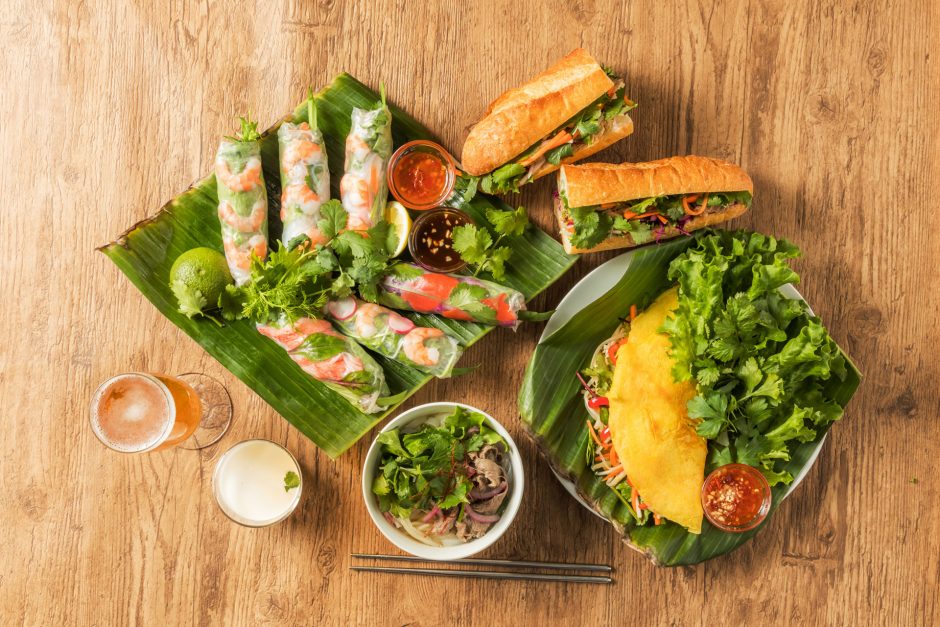
Vietnamese culinary has come a long way, with recipes and restaurants spread around the globe. However, their true essence goes deeper than the oft-mentioned French influence. For example, the idea that Pho derived from Pot-Au-Feu has long been debunked by Vietnamese scholars. The name actually became popular in the West because French colonials loved Ganh Pho, as in the hot steamy Pho sold by street vendors who shouldered mobile kitchens on carrying poles. The dish itself likely existed long before the French came, in the northern villages of Vân Cù and Dao Cù; though probably cooked with water buffalo or chicken bones instead of beef. It was later popularized to the rest of Vietnam during the colonial period, and brought to the world by refugees after the Vietnam War, along with other signature favourites.
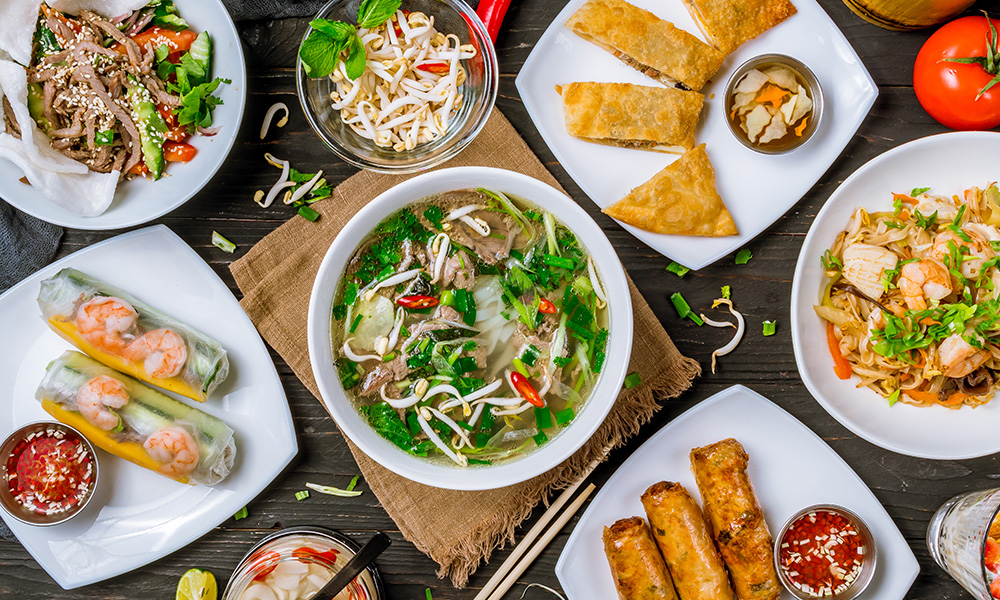
The core of Vietnamese cuisine lies in the balance of five flavours, which correspond to the five elements and five human organs: spicy (metal) to the large intestine, sour (wood) to the gallbladder, bitter (fire) to the small intestine, salty (water) to the urinary bladder, and sweet (earth) to the stomach.
The combination of dishes includes five nutrients: carbs, fat, protein, minerals and water. Chefs also strive to have five colours: white, green, yellow, red and black; which appeal to your gastronomic senses of sight, touch (in finger food like rice paper rolls), smell (from the aromatic ingredients), sound (as you eat), and taste (flavour and mouthfeel).
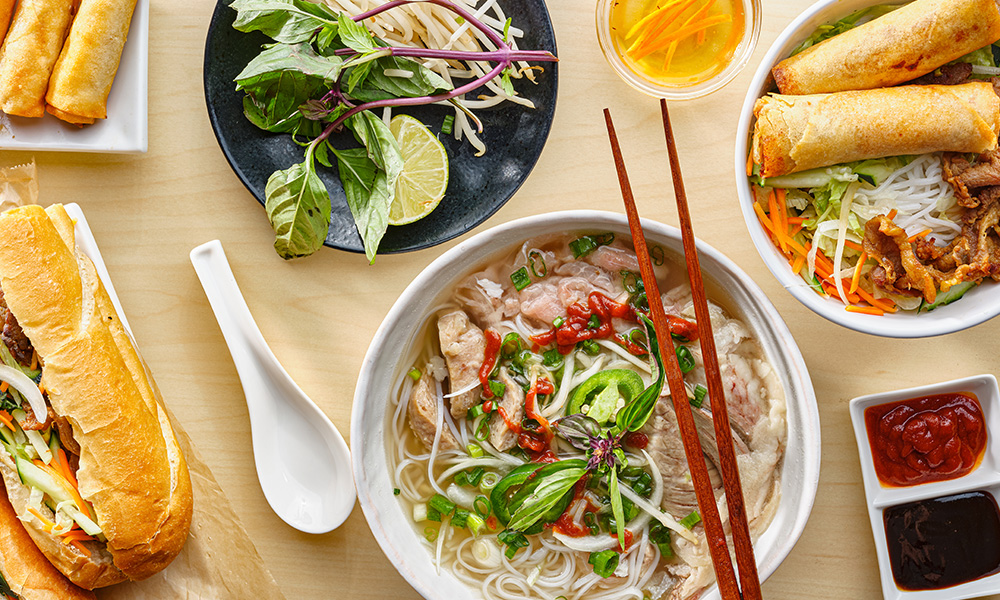
Other fundamentals include food freshness (never overcook), must-have herbs and veggies, the harmony of variety and textures, as well as pleasing arrangement.
With such meticulous philosophy, no wonder Vietnamese cuisine is renowned as one of the world’s yummiest and healthiest foods!

Most condiments are local raw vegetables like lime leaves, perilla, lemongrass, coriander, chilli peppers and shallot. Even food colourings are natural – red from beetroot or fried annatto seed oil. Orange from Gac melon. Yellow from turmeric. Green from pandan leaves. Black from ramie leaves. Dark brown in stews by heating sugar.
Essential Vietnamese sauces are Mắm Tôm shrimp paste, soy sauce, Hoisin sauce, Tương fermented soybean paste, and Nước Mắm Pha fish sauce with lemon juice, garlic, vinegar, sugar and chilli.

Besides Pho, there’s an incredible staple range of rice noodles, egg noodles and rice vermicelli soups, each with its own regional ingredients and flavours. Broths, stews and rice dishes are another signature, with a variety of meat, animal organs, seafood and vegetarian recipes.
For snacks, a whole category of spring and summer rolls (Món Cuốn) with shrimp, crab, pork or veggie fillings. Pastries are called Bánh: steamed dumplings wrapped in bamboo or banana leaves, and pan-fried cakes with similarly rich fillings. Desserts are mostly flavoured with coconut milk. Highlights include glutinous rice cakes, sweet soups, and puddings; served warm or cold.
Vietnamese people love to share with platters, dip sauces and a table full of dishes. Check out our guide to the basics of a traditional meal.
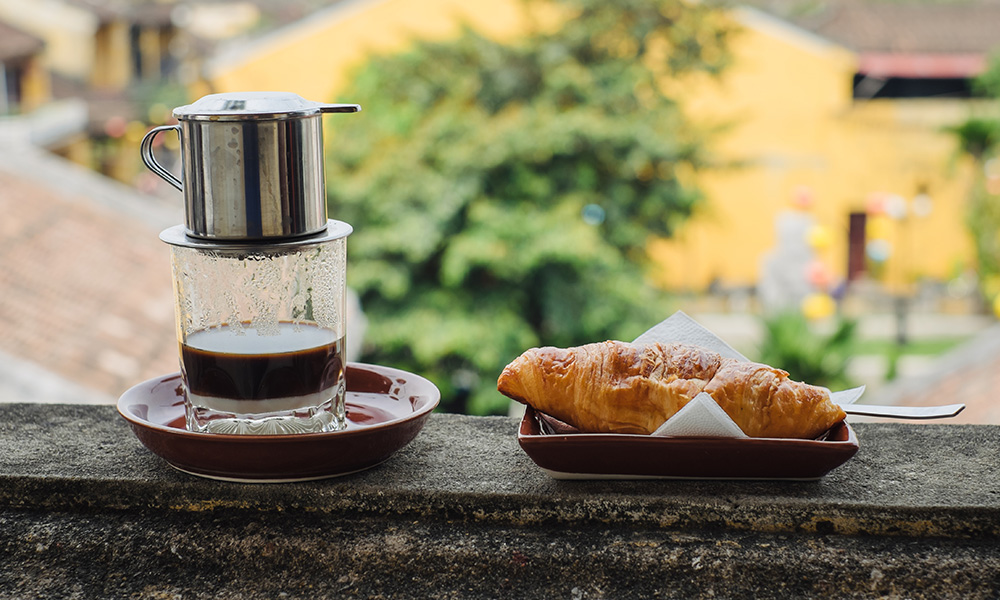
The French colonized Vietnam from 1887 to 1954, so their influence on the local cuisine is of course, undeniable. This is mainly inherited in Vietnamese coffee culture, with the signature drip-filtered and iced coffee; as well as in sandwiches and pastries.
Bánh Mi is an adaptation of the French baguette, made richer with Vietnamese pork, herbs and pickled veggies. Bánh Patê Sô is a crusty puff with minced pork or chicken filling. Bánh Flan is inspired by crème caramel, often paired with coffee.
Other influences include the liver pâté spread, croissant, yoghurt, omelette, rotisserie meats, sausages, European veggies like cauliflower, lettuce, avocado, asparagus and carrots; as well as handmade butter and cooking with wine.
Also to be noted: before the French, pork, poultry and seafood were the Vietnamese protein staples, while bulls and cows were beasts of burden. Only since the colonial period that beef was added to the local cuisine.
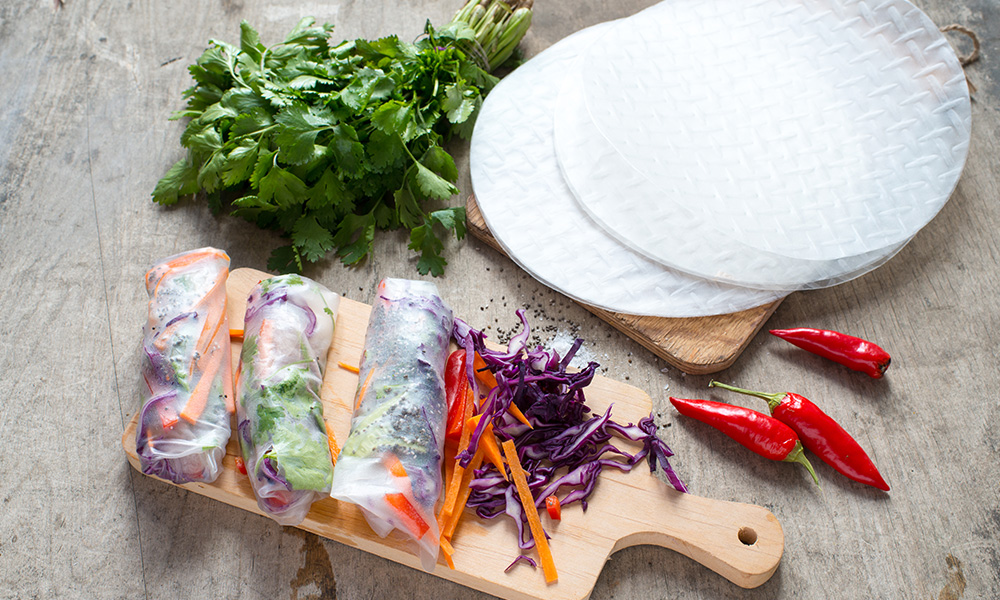
Vietnamese dishes are awesome to cook and enjoy. Feeling hungry? Try our delicious, wholesome recipes. Or learn a few simple dishes with Chef Lillie Giang: Vietnamese Grilled Pork Noodle Salad (Bún Thịt Nướng), Spring Rolls and Rice Paper Rolls.

Lighten your mood and rejuvenate your senses with 6 must-try Malaysian drinks!

Pair your hearty barbecues with these refreshing Asian delights!

What are the properties of ginger, and how to pick, store and use ginger in your cooking? Find out here!